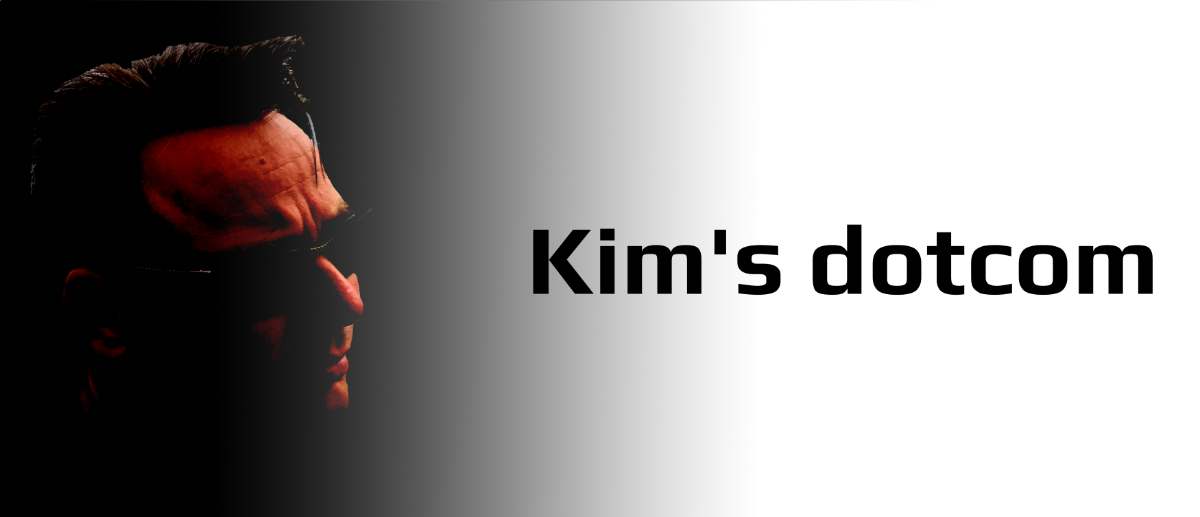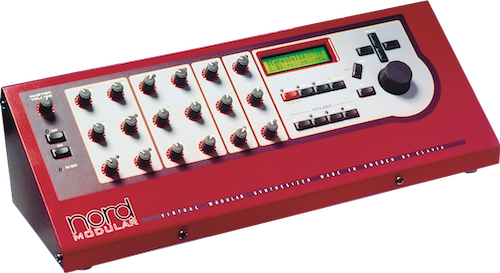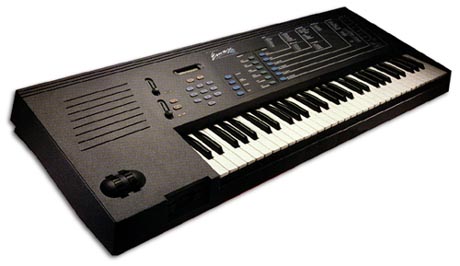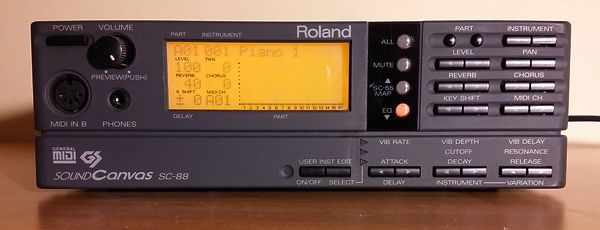This is one of my all time favorites. The modular concept is extremely pedagogic, you simply can’t avoid learning how synthesis works while you patch, or even while you study what others have patched. The user community makes sure that you really don’t have to make your own patches if you really don’t want to (you do want to, though. It’s inevitable). There are tens of thousands of patches downloadable for it, each patch potentially an entire synthesizer model (as opposed to a single sound), and new patches show up daily on the NM mailing list. I still have have thousands of patches on my HD which I haven’t checked out. The NM shifted my interest from sampling technology to analog synthesis. The only gripe is the “mere” 4-part multitimbrality,
I eventually sold this one, but I remember it had a few very nice sounds, and I particularly liked the reverb, which sounded very warm and “distantly present”. My main problem with this was simply that it was a pain to program, due to the 2-line display and what felt like a deep menu hierarchy, so I never really got past the presets, which is a crying shame, as I am sure there were some interesting possibilities. I also never figured out why the effects settings kept changing even though I didn’t want them to. I regret selling it, and it is likely I will get another one at some point. I have now also invested in Sound Diver, which should make the programming much easier (or, in this case, possible). Another possibility is that, as Korg has released it as a soft synth, I might go for that one instead.
This was the first machine that really felt like a synth, with LFO’s, filters and the works. A very straightforward machine and very easy to use, but it didn’ t sound quite as warm as the Emax, but that didn’t really bother me. The Akai got me into actual sound programming, and having used this for a while, I started to get the hang of synthesis, at least the sampler kind of synthesis. FOr several years, it was my main instrument, but once I noticed I hadn’t really used it for anything else than as a HD recording device for the past year or so, I traded it for a Yamaha DTXPress drum set in the beginning of 2002. Even though it is fondly remembered, I don’t regret selling it. My K2600R does everything the Akai did, and more.
My first sampler. A definite nostalgia factor associated with this one, as Depeche Mode toured with Emaxes for several tours. So I just had to have one. The moment I got it, I realized that its 2 MB memory simply wasn’t enough, so the same week I bought an Akai S2000. I never really used the Emax’ sound engine in my music. I still loved the sound, which was very soft and powerful, but compared to the Akai, it simply was too cumbersome to use. It served mainly as my main keyboard until I sold it in 2002. Visually the Emax is extremely pleasing, and it is a very versatile keyboard: for example, in case you didn’t have a real mixer, you could connect 5 (I think) external stereo sound sources to the insert buses at the back and let the Emax mix the signals and output them all through the Main Out. Therefore an excellent first keyboard for anyone who might want to expand their setup later. With more RAM and a software editor I probably never would have sold it. A real beauty. I regret not having it anymore. The nostalgia factor is still enormous.
A 32-part multitimbral General MIDI rompler. Editable resonance and filter cutoff + ADSR envelope. Chorus, reverb and a delay I never managed to get to another tempo than 90 bpm. Nothing spectacular, but does what it’s supposed to do. This was my main sound source between 1995 and 1997, (sadly) my most productive period, if you count the number of songs I started. It is still usable, and I mainly use it for strings, pads and the occasional percussion sounds. If I ever sell anything anymore, this is probably the first one to go, although I can’t imagine why anyone would pay anything for it, as nowadays most soundcards do pretty much what this one does. I think. I don’t really know anything about the current state of sound cards.
A sample-based mono-timbral polyphonic rompler labeled as “Performance synthesizer”. Quite basic sound editability: 2 ADSR envelopes, one for the volume and the other to modulate the lopass filter. Reverb. 2 sound banks with 32 factory sounds each, and a possibility to save another 32 in a user sound bank. Two sounds from the same bank could be combined into one by selecting them simultaneously. Even though this one really doesn’t count as a synthesizer, it was the one that got me into synths. It also introduced me to MIDI, when I connected it to my first 386-PC with a Gravis Ultrasound sound card. I used it mostly as a master keyboard, for which it was quite nice. Having not really used it for several years, I ended up selling it in 2000. I don’t particularly miss it.
Analog one-oscillator monosynth. I never really did anything with this one, but on the other hand making music was far from my mind when I got this one. I just bought it because I had always been interested in sythesizers, and music made with them. Plus, it was dirt cheap. As far as synths go, this one was so simple that it wasn’t even particularly interesting. It had selectable basic waveforms (square, triangle and sine, and possibly even noise, I think) and a lowpass filter which could be modulated by an envelope. It may be possible that several wave forms could be selected simultaneously, but I’m not sure. No other modulation was possible, so this was strictly a beep-and-bwaaooouunngg-machine. I only listened to it through its crappy internal speaker, so for all I know it could secretly be the ultimate bass machine. I sold it quite quickly, and bought a Roland JX-1 instead.







